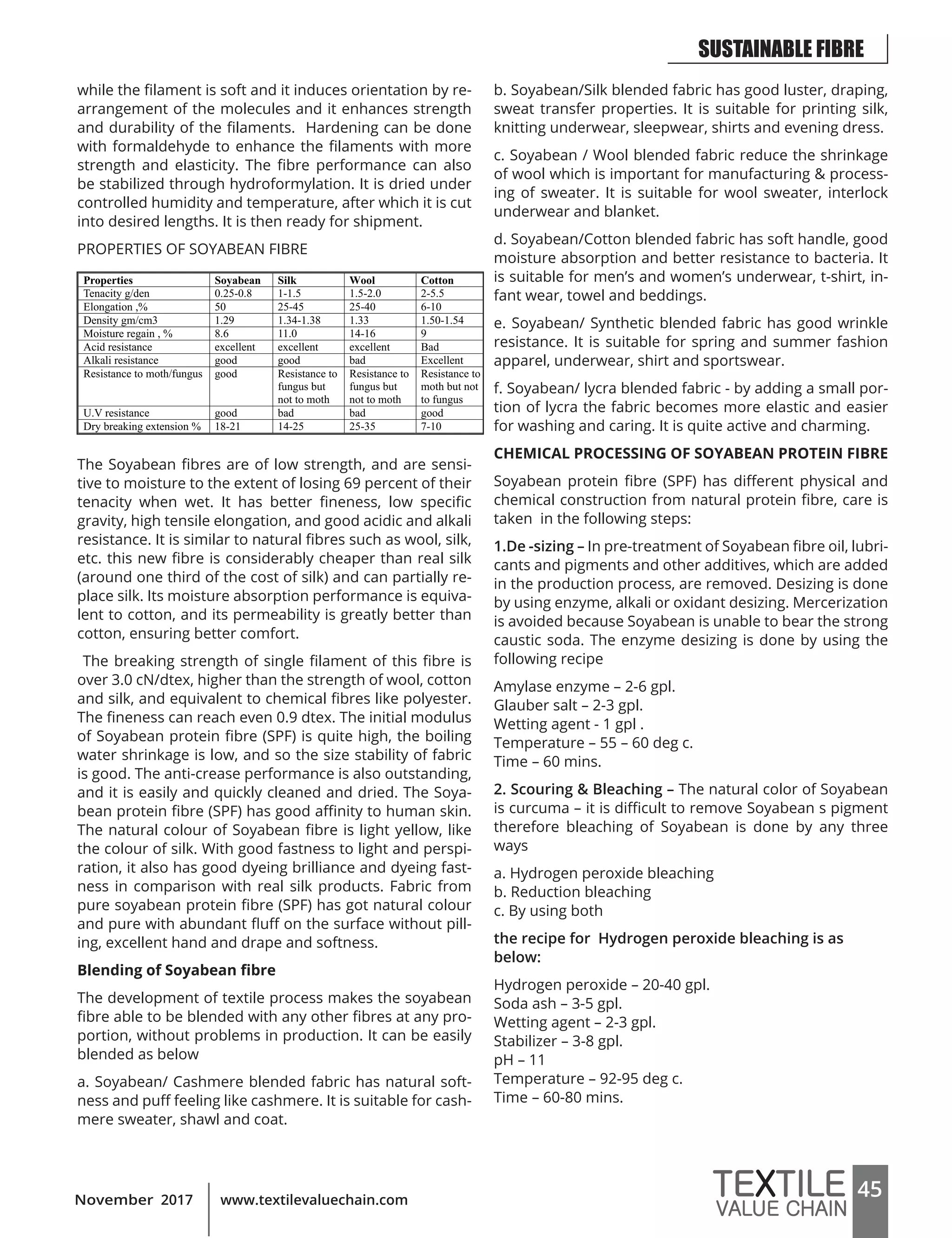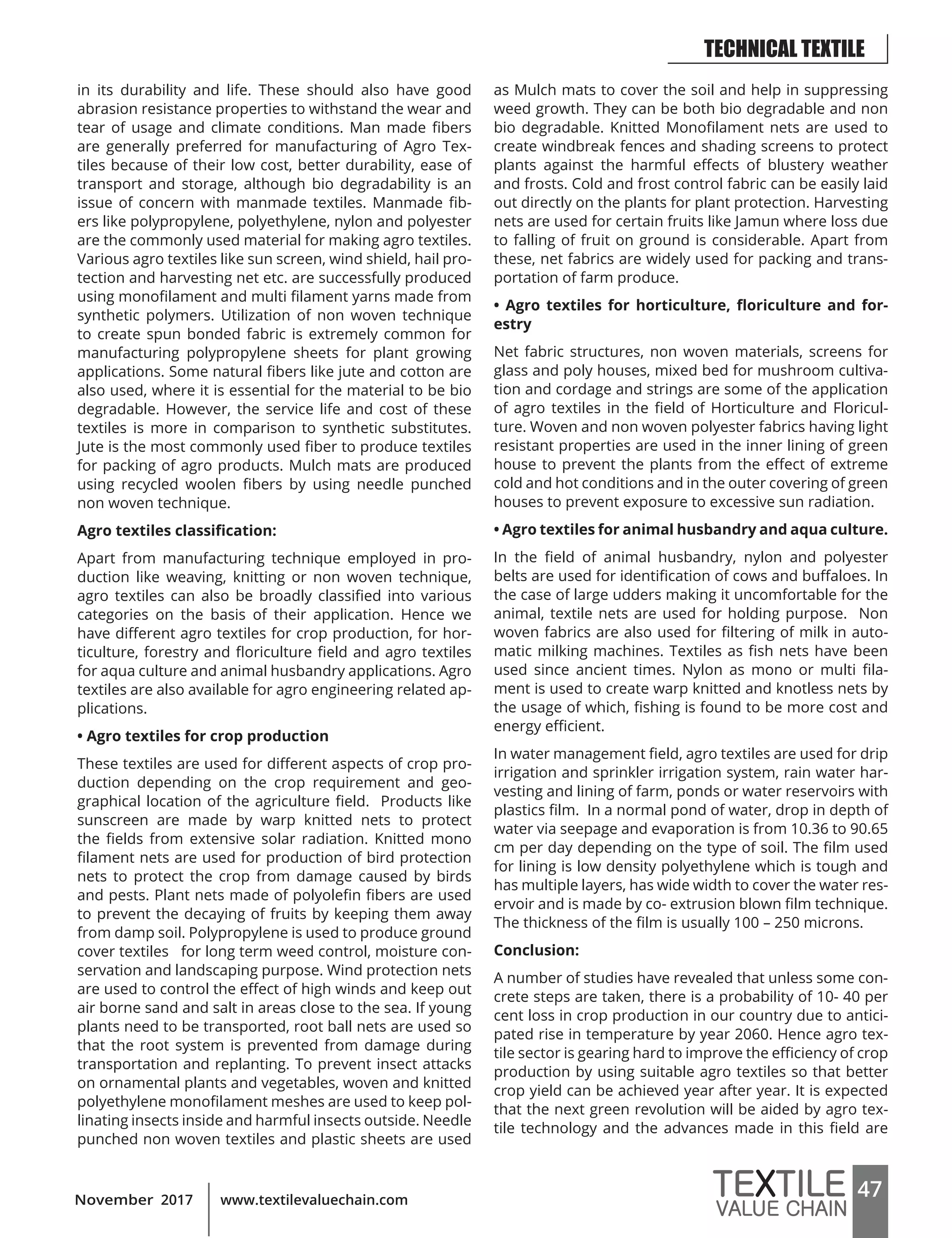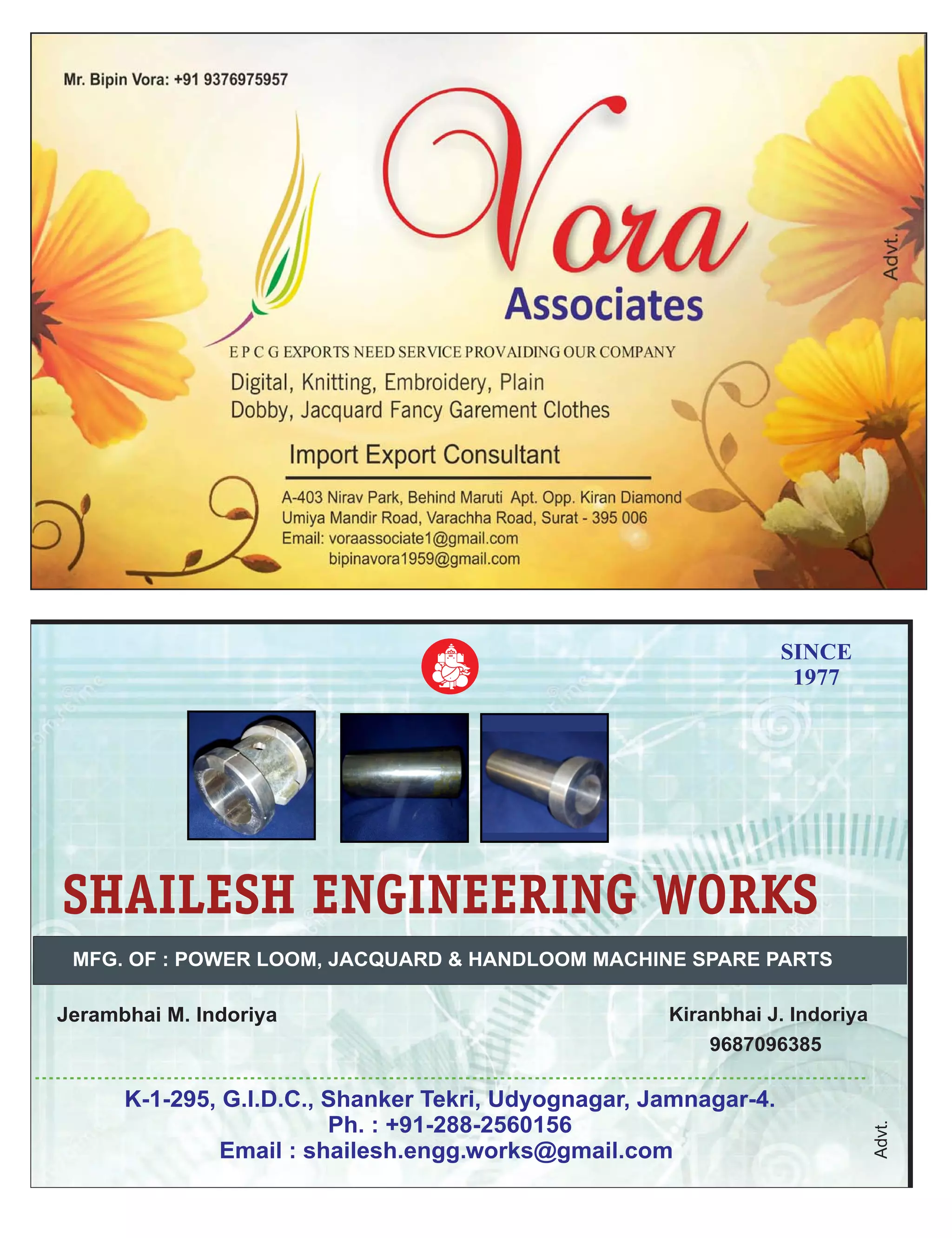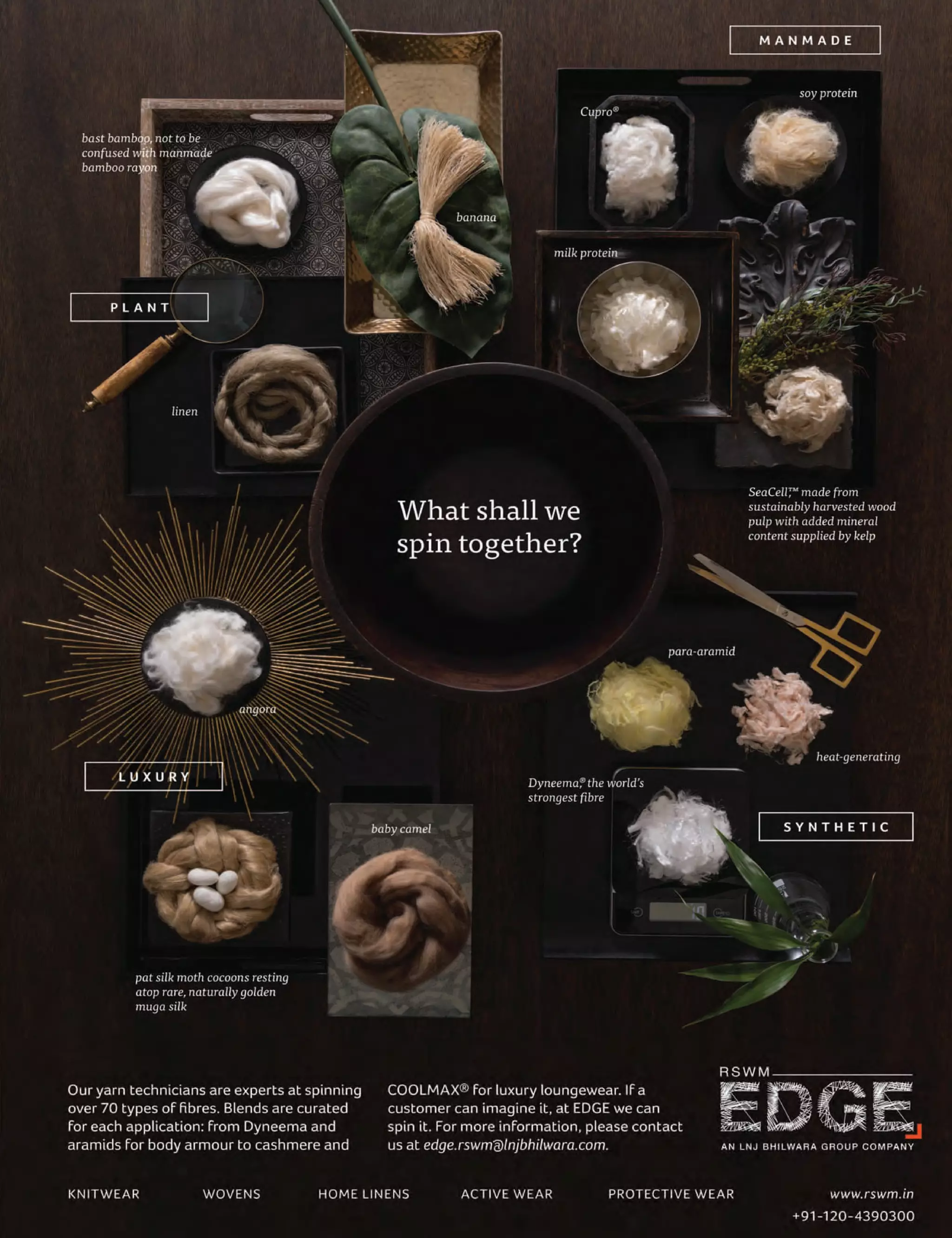Ms. Jigna Shah
Dear Readers,
Welcome to the November 2017 issue of Textile Value Chain magazine.
This month's cover story focuses on the textile industry in Gujarat and the opportunities it presents for investments and job creation. Gujarat is emerging as a major hub for textile and apparel manufacturing in India. The state government is targeting $250 million in new investments and 1 lakh new jobs in the apparel sector over the next few years.
We have interviews with Mr. Ashutosh Gilra of Geron Card Clothing and Mr. Marc Jarrault of Lapp Group India, where they discuss their company's operations and plans for the Indian market.







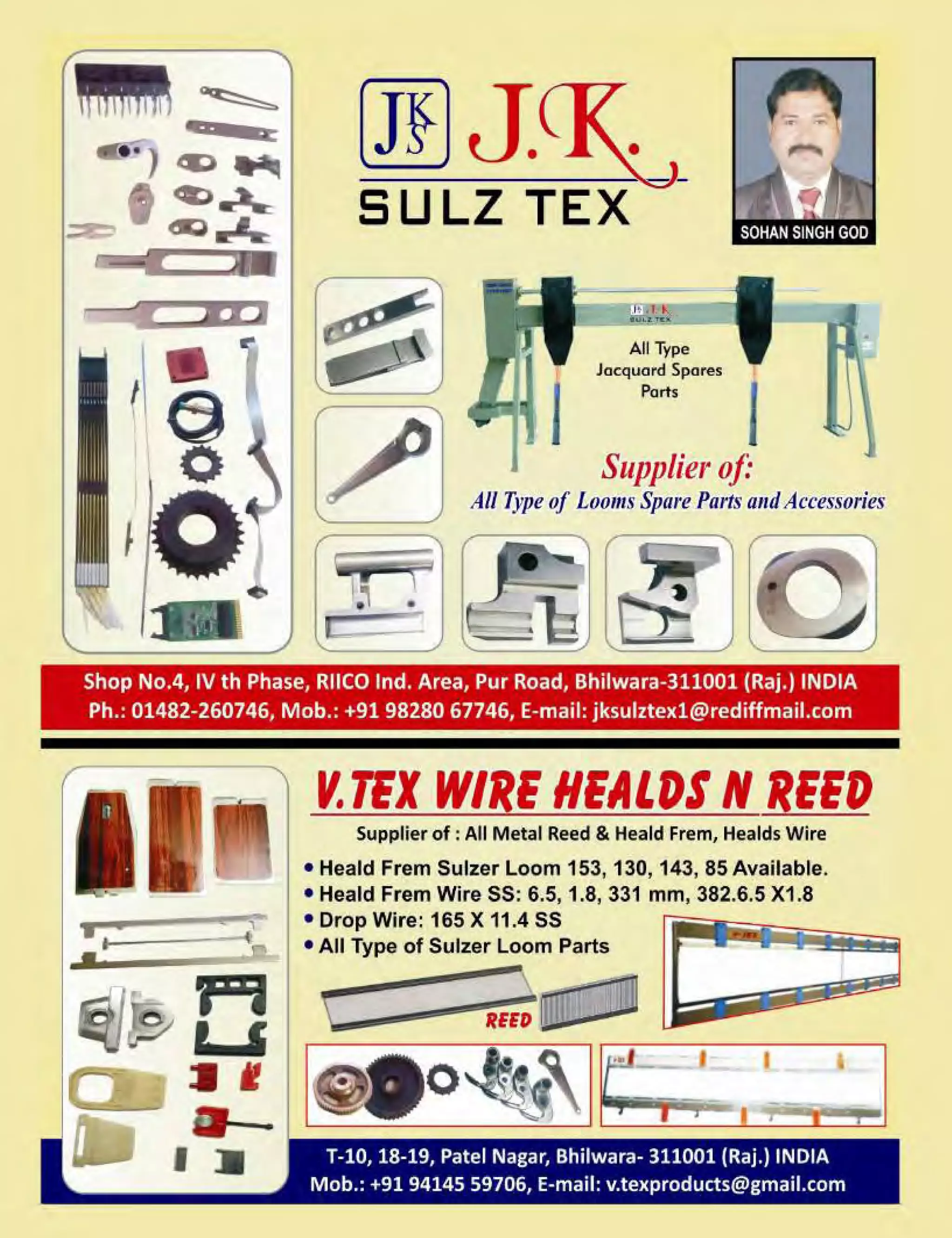



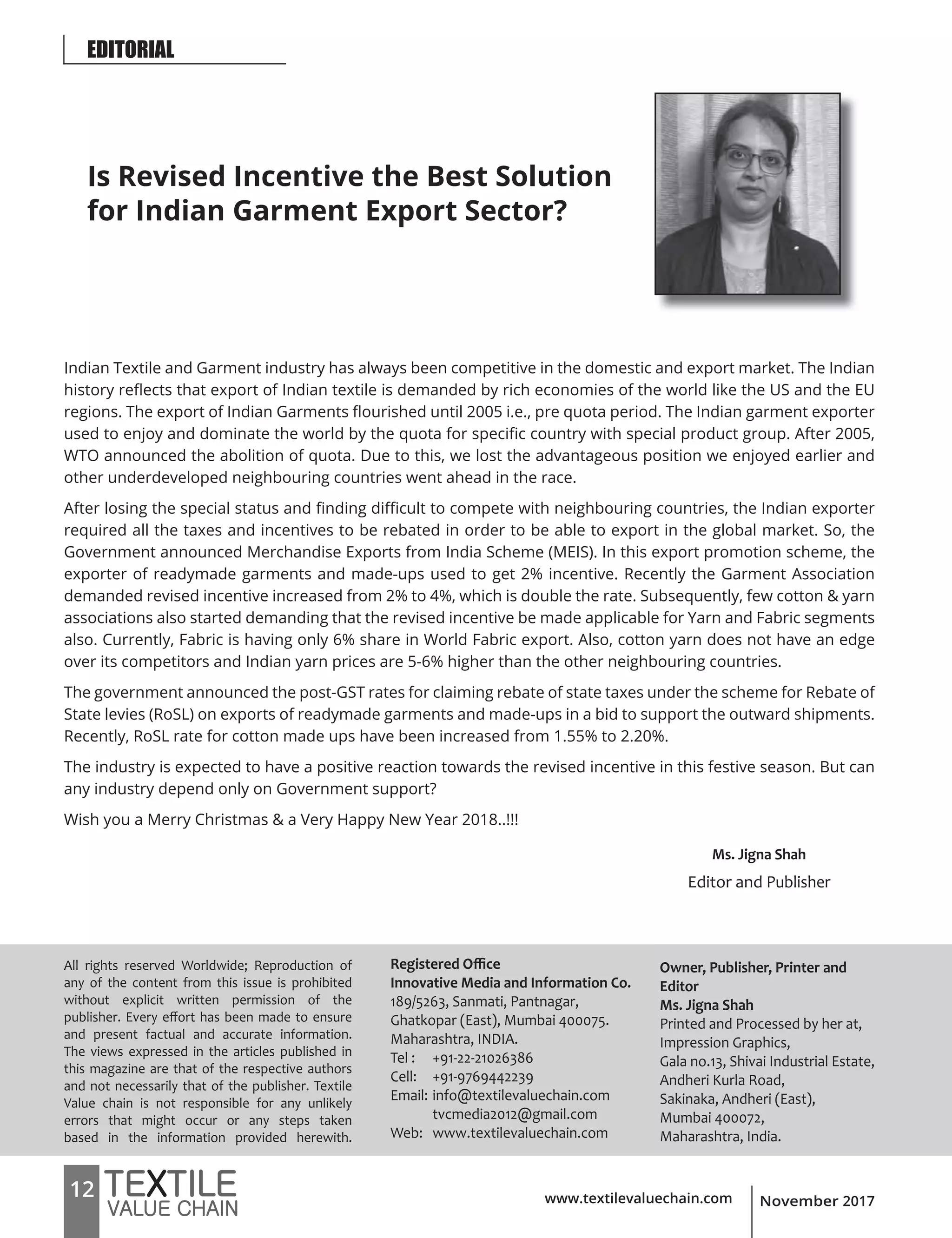







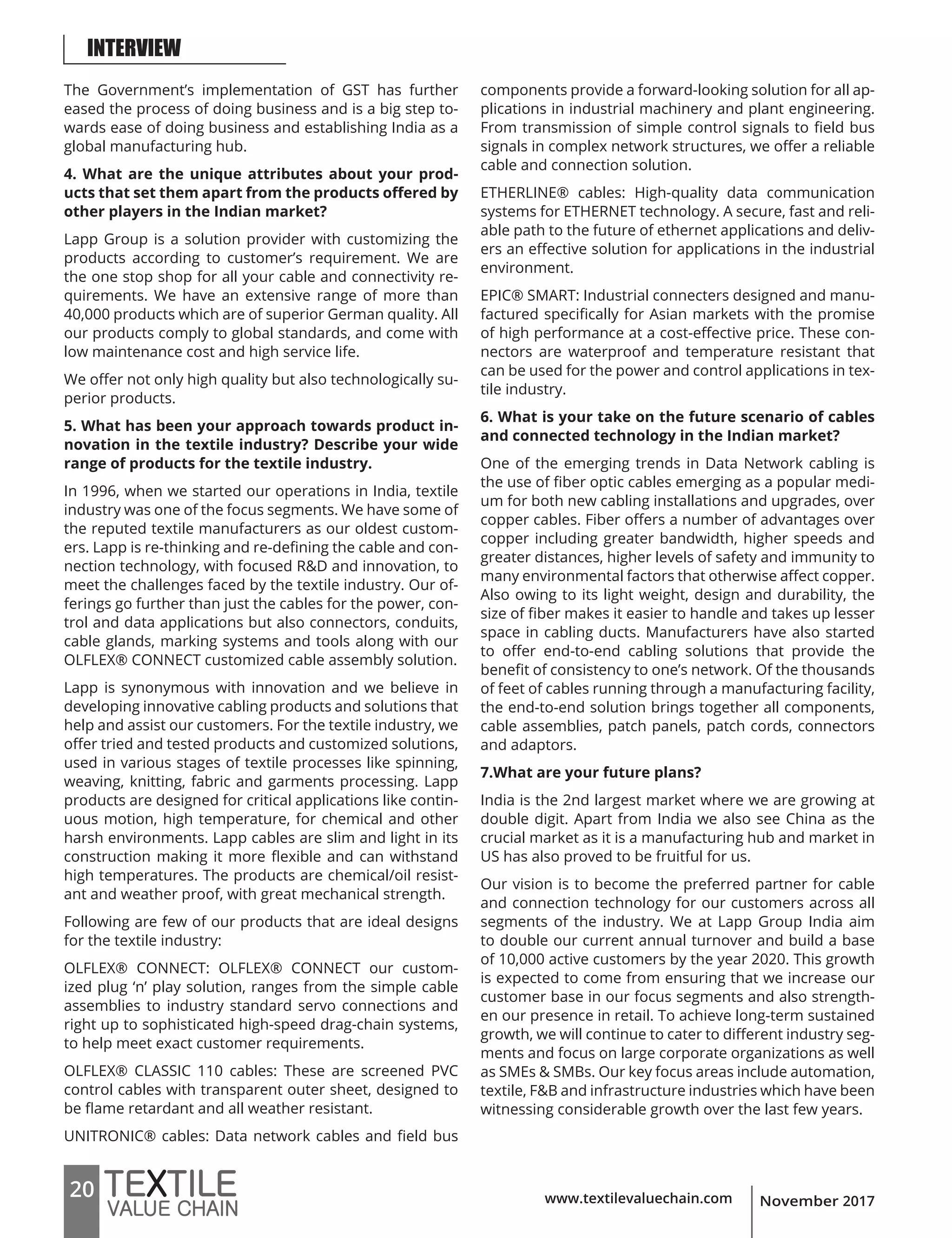
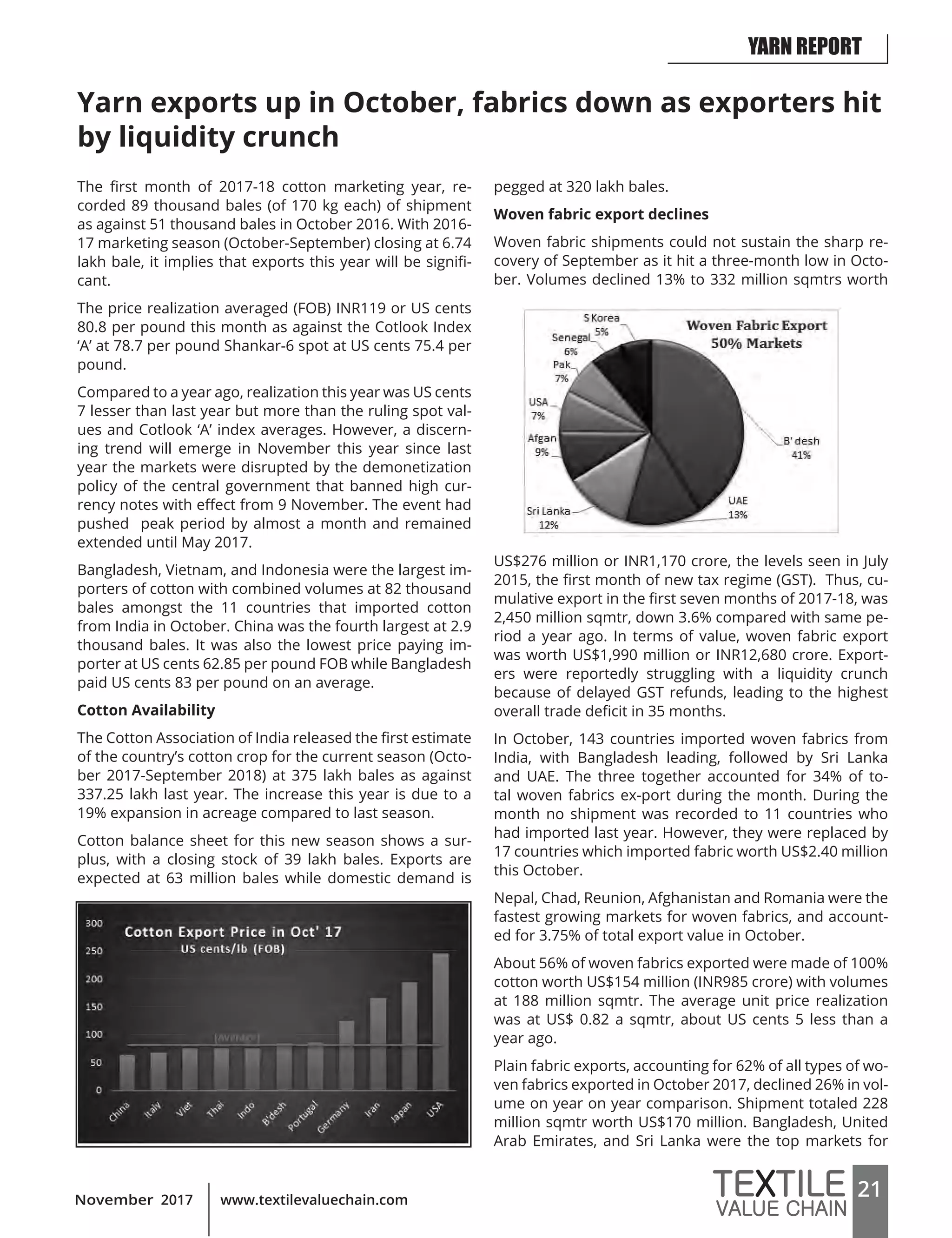
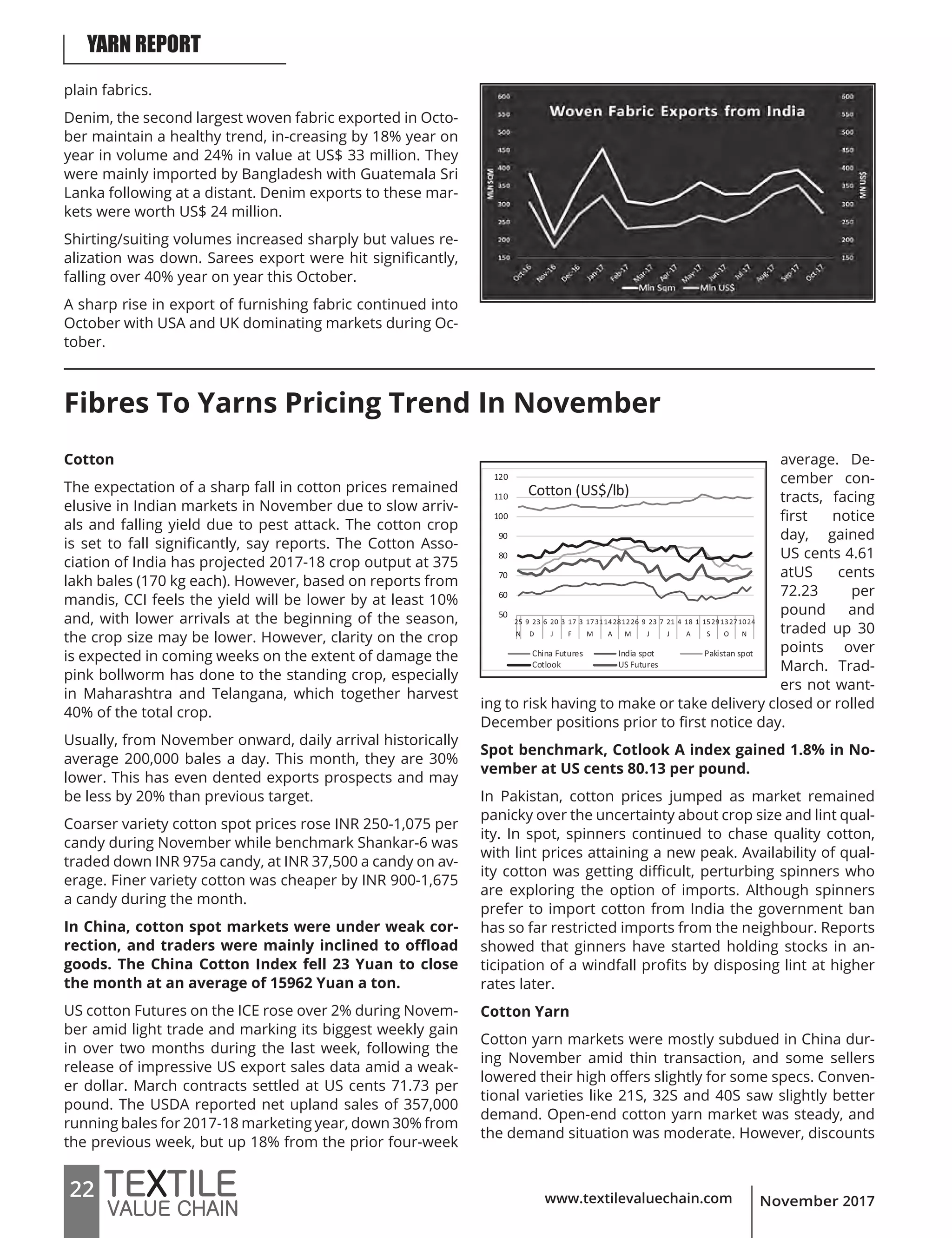
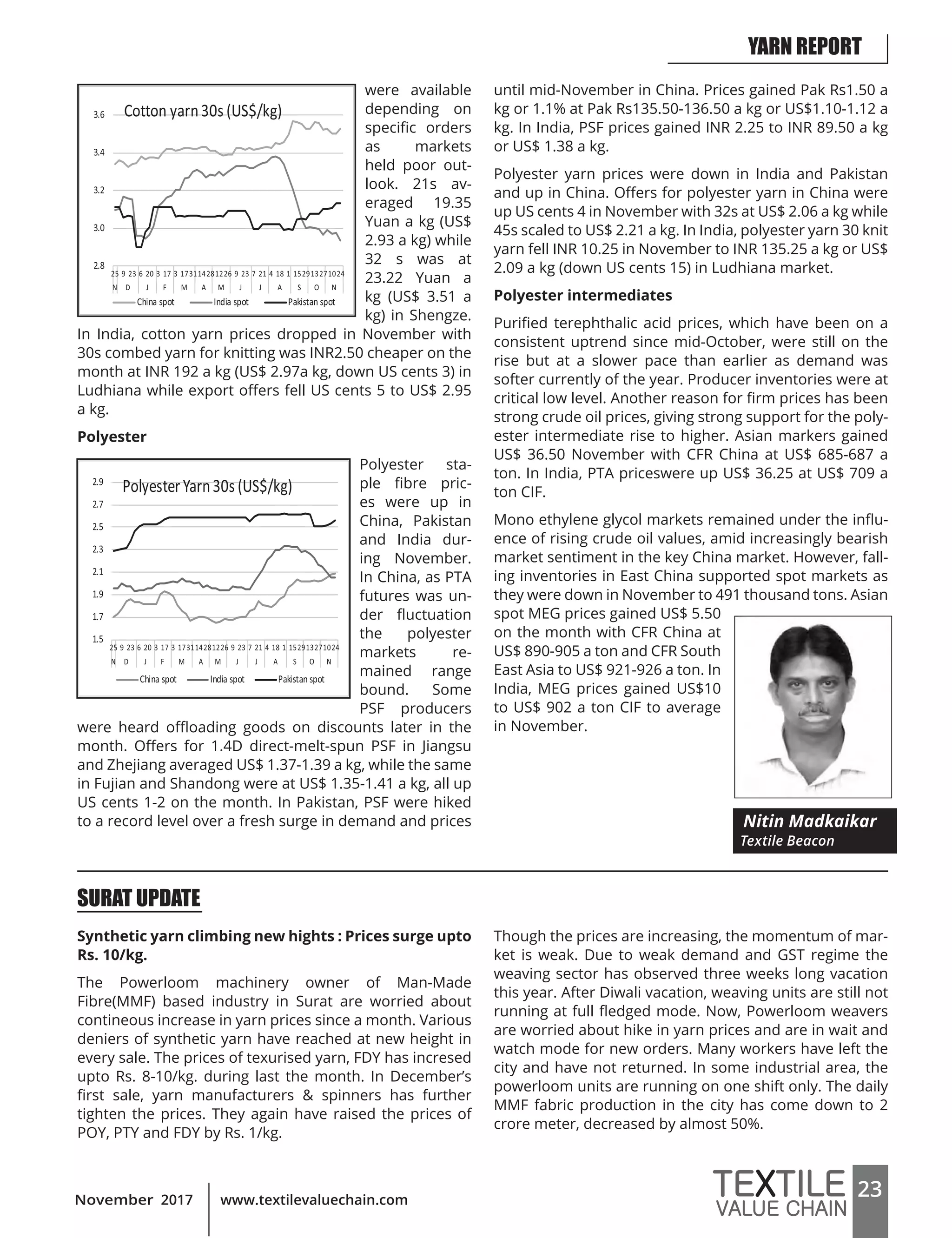
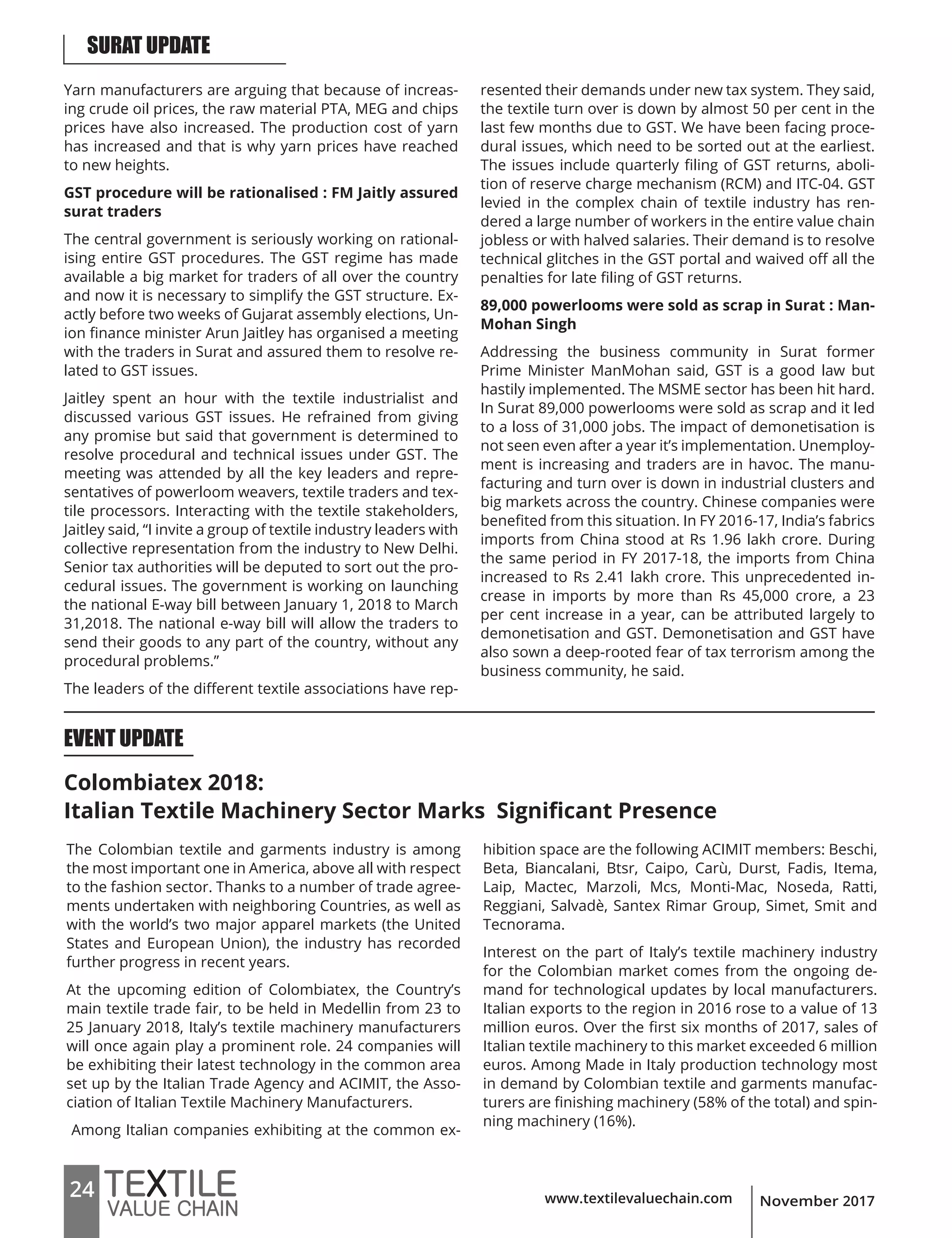



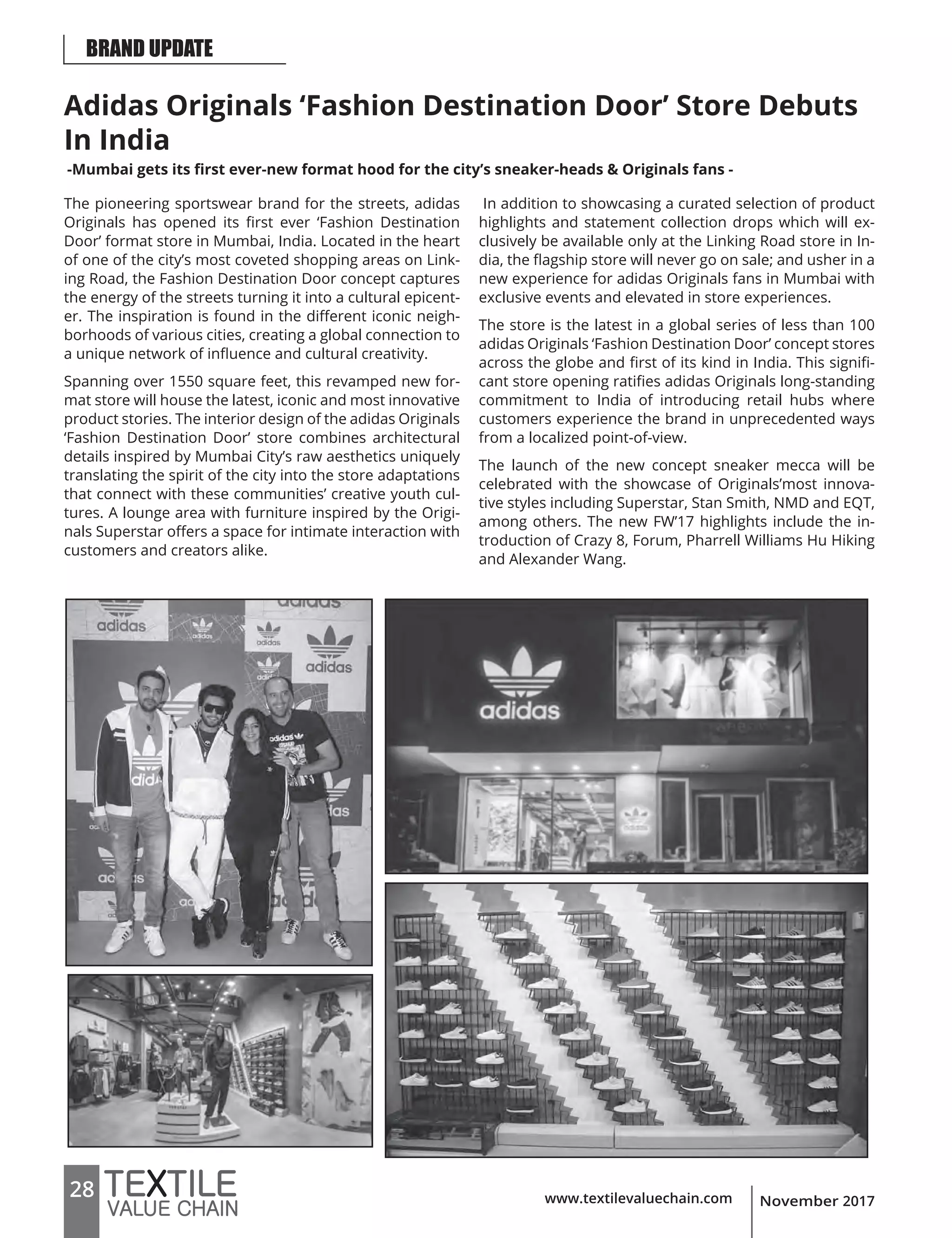






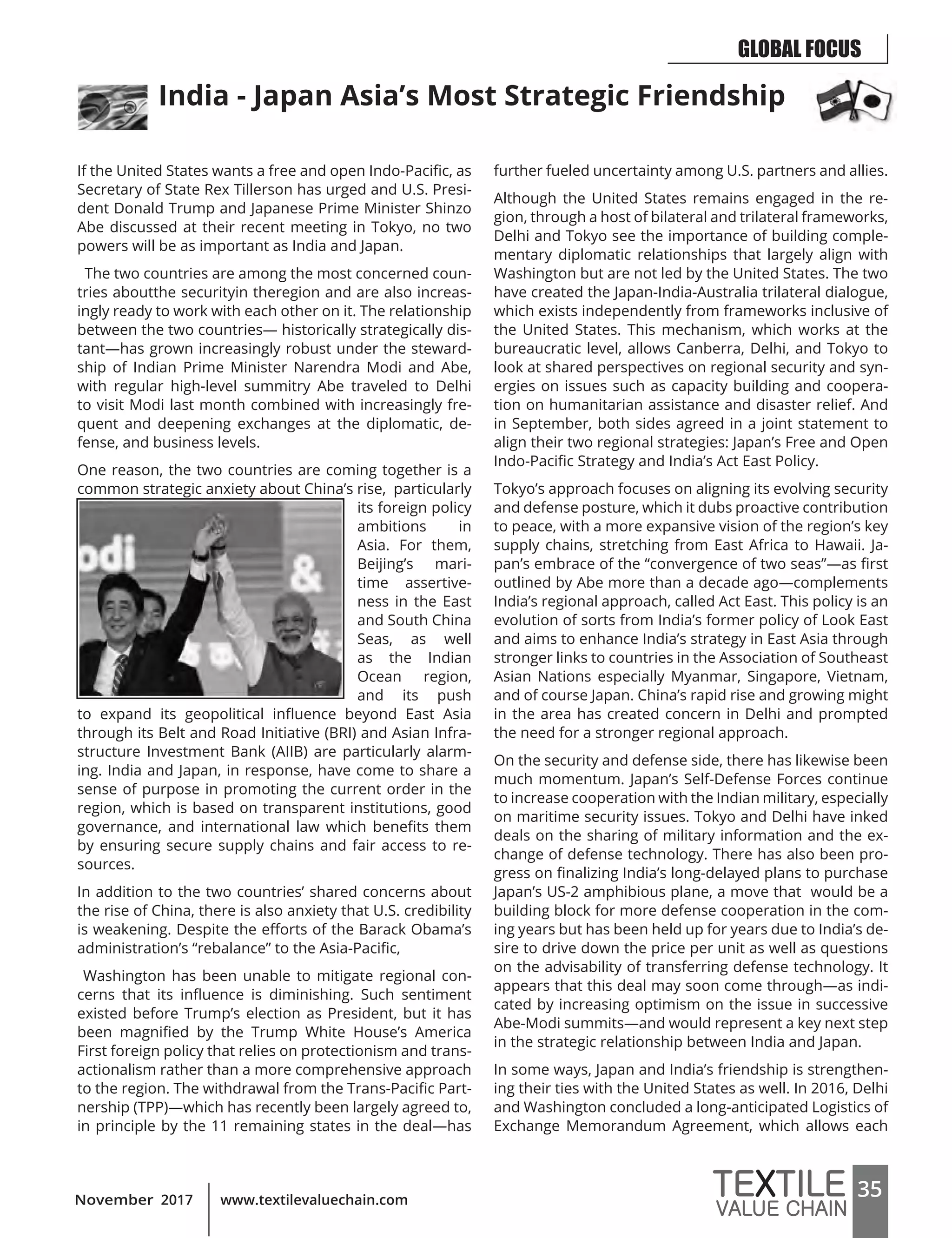

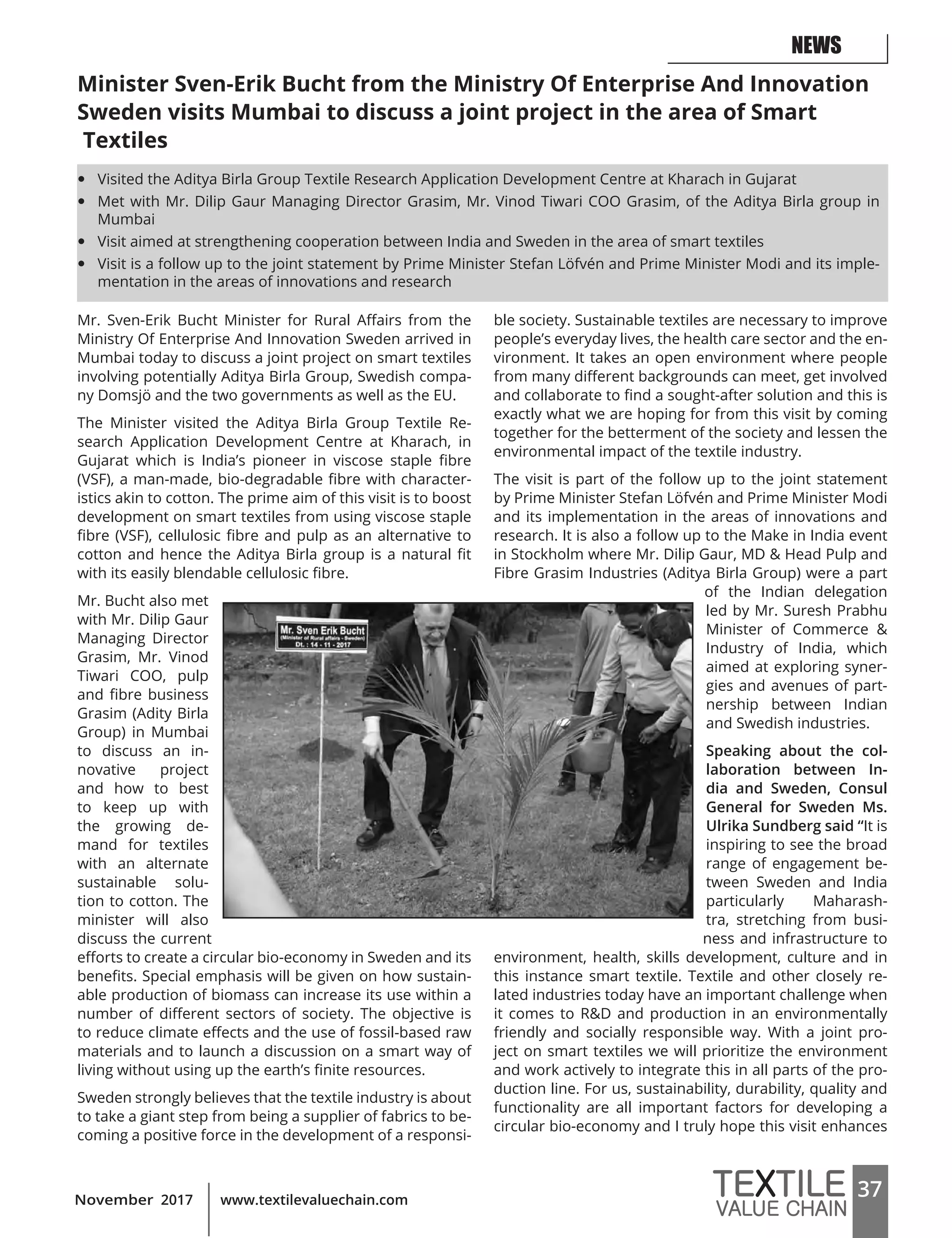


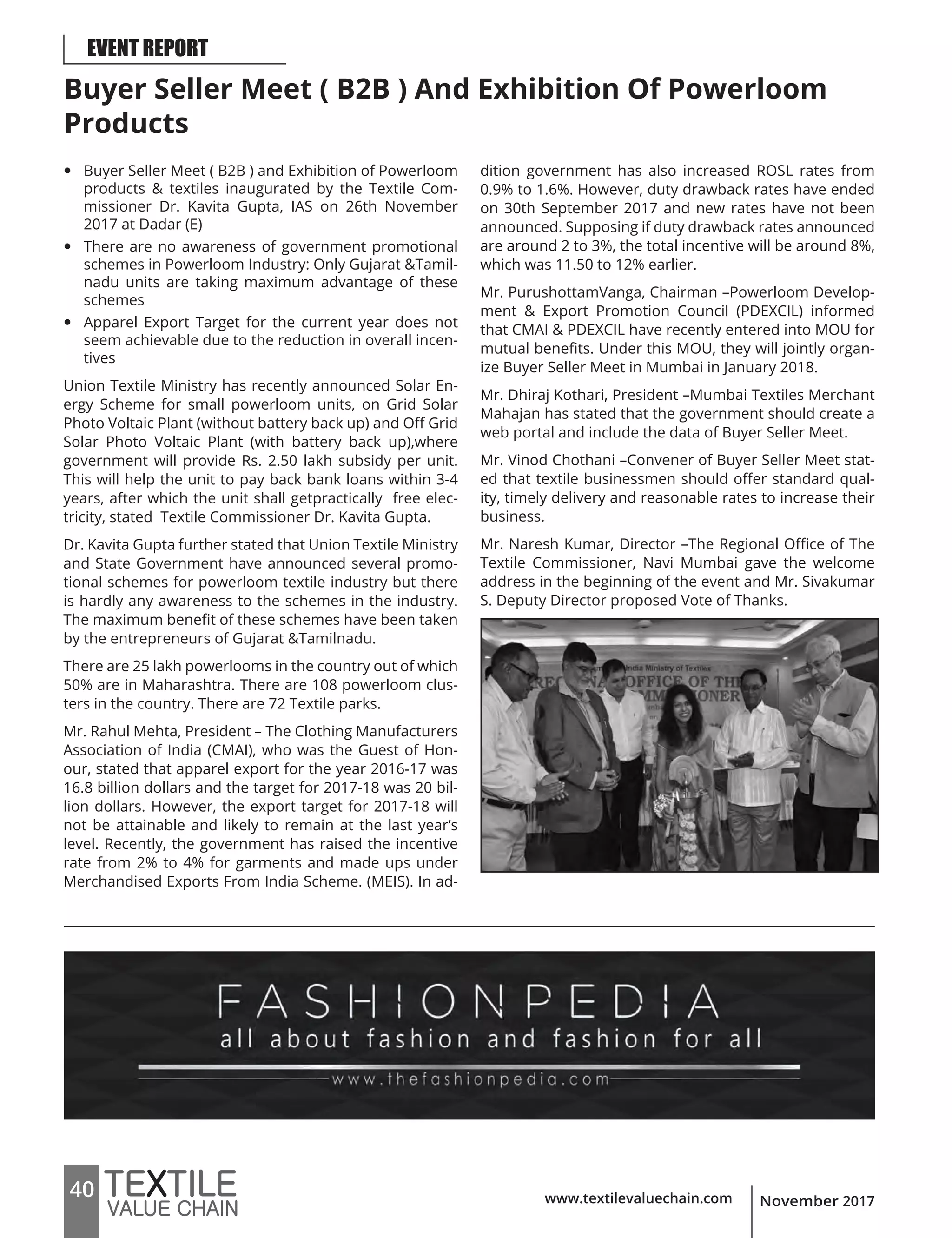
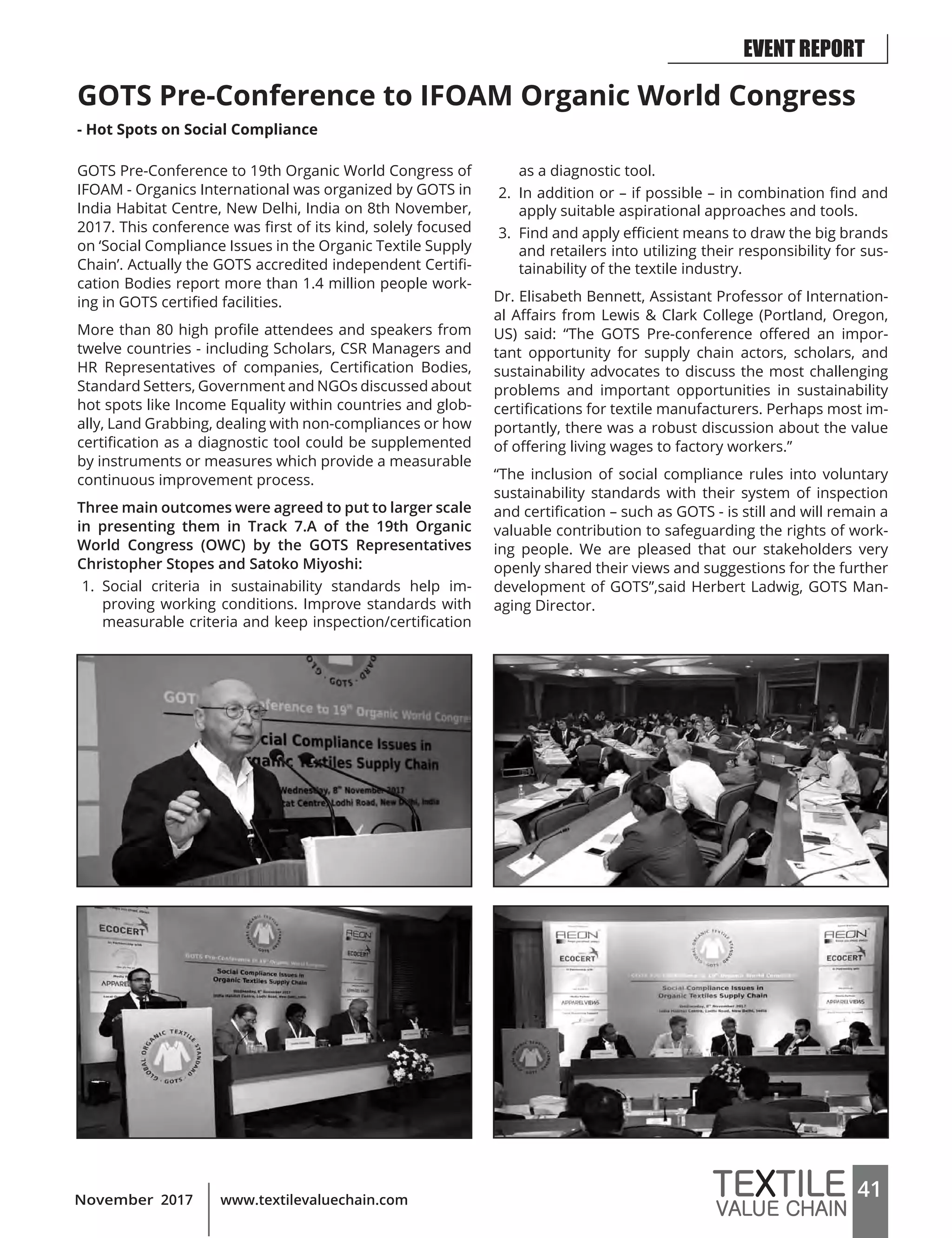
![www.textilevaluechain.com42 November 2017
The Indian Technical Textile Association (ITTA) members
have interactive meeting on PROTECH with NITRA. Shri
Basant Lohia, Director, Tarasafe International Ltd. was
the chief Guest.
Dr. Arindam Basu, DG NITRA made the presentation on
NITRA activities and research & development work re-
cently carried out by NITRA. Dr. MS Parmar Joint Director
(A) also presented the work related to COE and various
developments in this field.
ITTA members discussed the areas where NITRA & ITTA
can work together in the field of technical textiles par-
ticularly testing & evaluation services and CE Licensing.
Members also requested for development of standards
on technical textiles and their release from BIS, which can
satisfy domestic as well as international requirements in
fast manner. Sh. Mahesh Kudav, Venus Health & Safety
and other ITTA members also needed support of NITRA
in making use of technical textiles / PPEs mandatory as
safety gears by the Government particularly labour de-
partment in various hazardous industries like cement /
chemical etc. ITTA members were very much impressed
about the facilities available at NITRA specially in the field
of protective and automotive textiles.
Dr. Arindam Basu assured them the best services from
NITRA and all concerns raised by the ITTA members will
be addressed by NITRA.
Interactive Meeting on Protech
The Solapur’s Uniform & Garment Fair-2017, 1st Edi-
tion held in January 2017 was organised by Shri Solapur
Readymade Kapad Utpadak Sangh in association with
The Textile Ministry Govt. of Maharashtra and Mafatlal
Industries Ltd., at the Balaji SarovarPremierehotelgot
good response.
The fair which was inaugurated by Subhash Deshmukh
Textile Minister, Government of Maharashtra,sawover
6000 eager buyers from across India and also delegates
from countries including Sudan, Israel, Qatar, Dubai, Ni-
geria, Africa and Malaysia.
Solapur’s 1st edition of Uniform Garment Fair 2017 was
India’s premium trading and sourcing platform targeted
exclusively at the uniforms, mens shirts andkids wear in-
dustry wherein buyers,manufacturers’, product innova-
tors and industry leaders gotfirst-hand information onlat-
est brands and gained new business opportunities.
Honorable Minister of Textiles, Co-operation and market-
ing Subhash Deshmukh said that Maharashtra can be-
come hub of uniform sourcing for India which is vision of
Honorable Chief Minister Devendraji Fadnavis. Takingthe
Minister’s advice and following the tremendous success
of the 1st Edition of the Fairthe Association decided on
the same venue for the 2nd Edition on B2BUniform &
Garment and Home Textile (towel and bedsheet manu-
facturer’s) Expo on27th, 28th and 29th January 2018.
This fair will present unique blends of uniform, garment,
handloomand home textile manufacturers who will dis-
play their products under one roof. This fair will be or-
ganised as per international standards at premium prop-
erty in solapur. Here visitors will get a chance to interact,
understand, learn and explore ideas with 200+ manufac-
turers, exhibitors’, merchants from Maharashtra and fur-
ther open new doors for various new business ideas and
help generate foreign trade.
This exhibition will also feature manufacturers of uniform
accessories, bags , belts, ties and more making this a sin-
gle sourcing platform for all items related to school and
work wear uniform.
The Minister also informed that as the state has abundant
labour, land and infrastructure available at cost effective
pricesincitieslikeSolapur,SangliandIchalkaranji,amongst
others, these cities must focus on garmenting this can
be fruitful for both manufacturers’and labour. He added
that new textile policy is coming soon which will be very
favourable for the garments manufacturers as the state
possesses a strong industrial base, peaceful workforce-
and a highly talented pool of people and a resources to
serve entire textilevalue chainfrom cotton [farm] to fi-
bre to fabrics to processing to garment/made-ups and
through technical textile.
Maharashtra’s Chief Minister,Honorable ShriDevendra
Fadnavis taking note of uniqueness of this exhibition
had send aletter of appeal for marketing of this exhibi-
tion. This appeal letter has been sent to around 100 + for-
eign missions in India and around 150+ Indian missions
abroad.
Stage Set For Solapur’s 2nd Edition Uniform, Garment And Home Textile Expo
NEWS
EVENT REPORT](https://image.slidesharecdn.com/nov17webissue-171217150211/75/November-2017-issue-42-2048.jpg)


